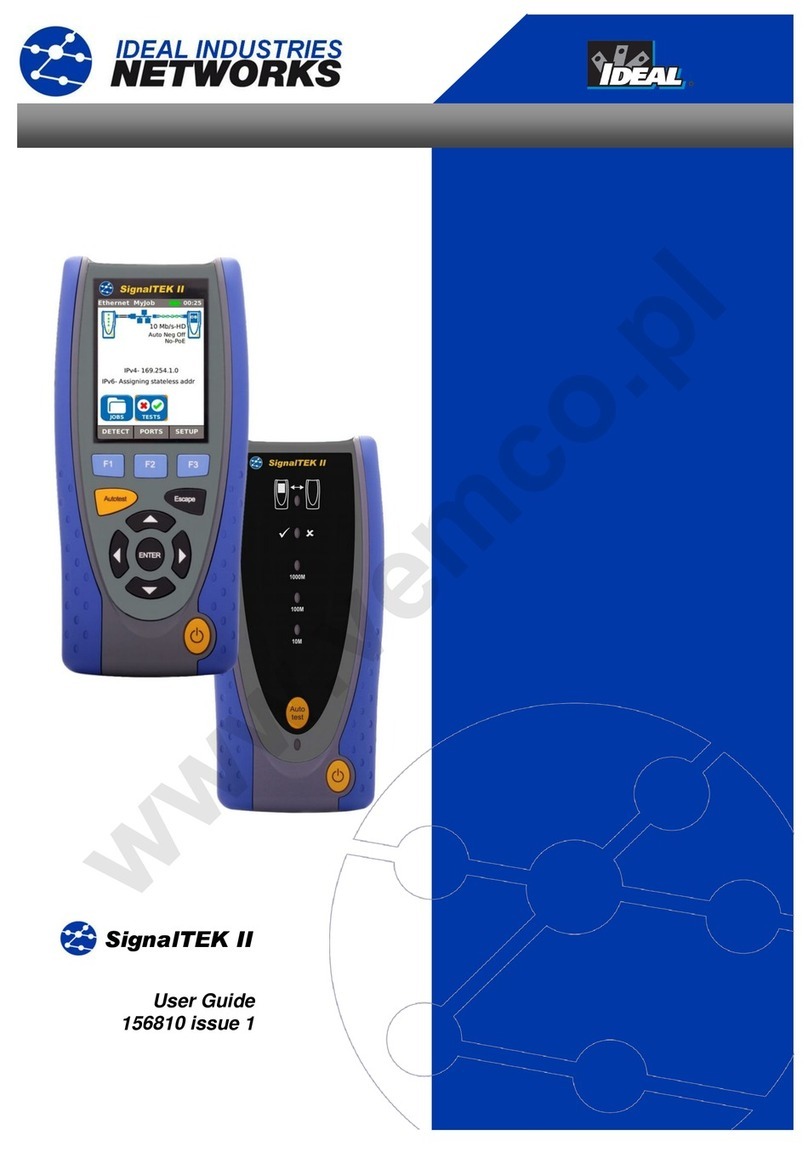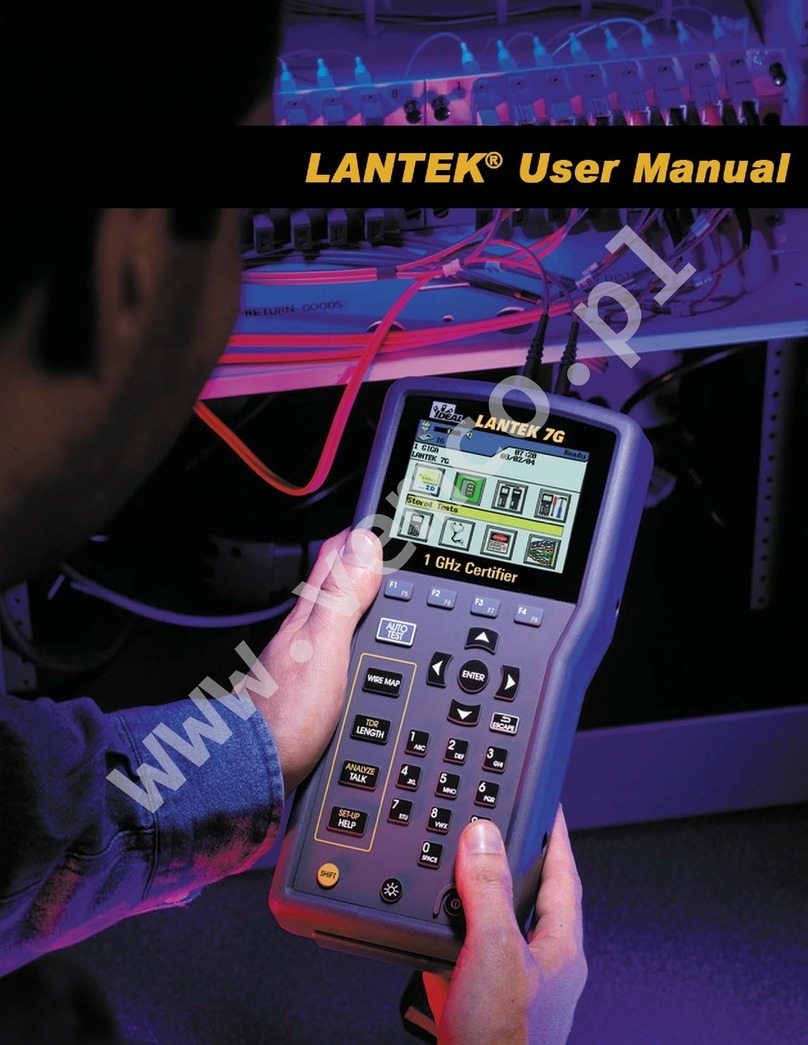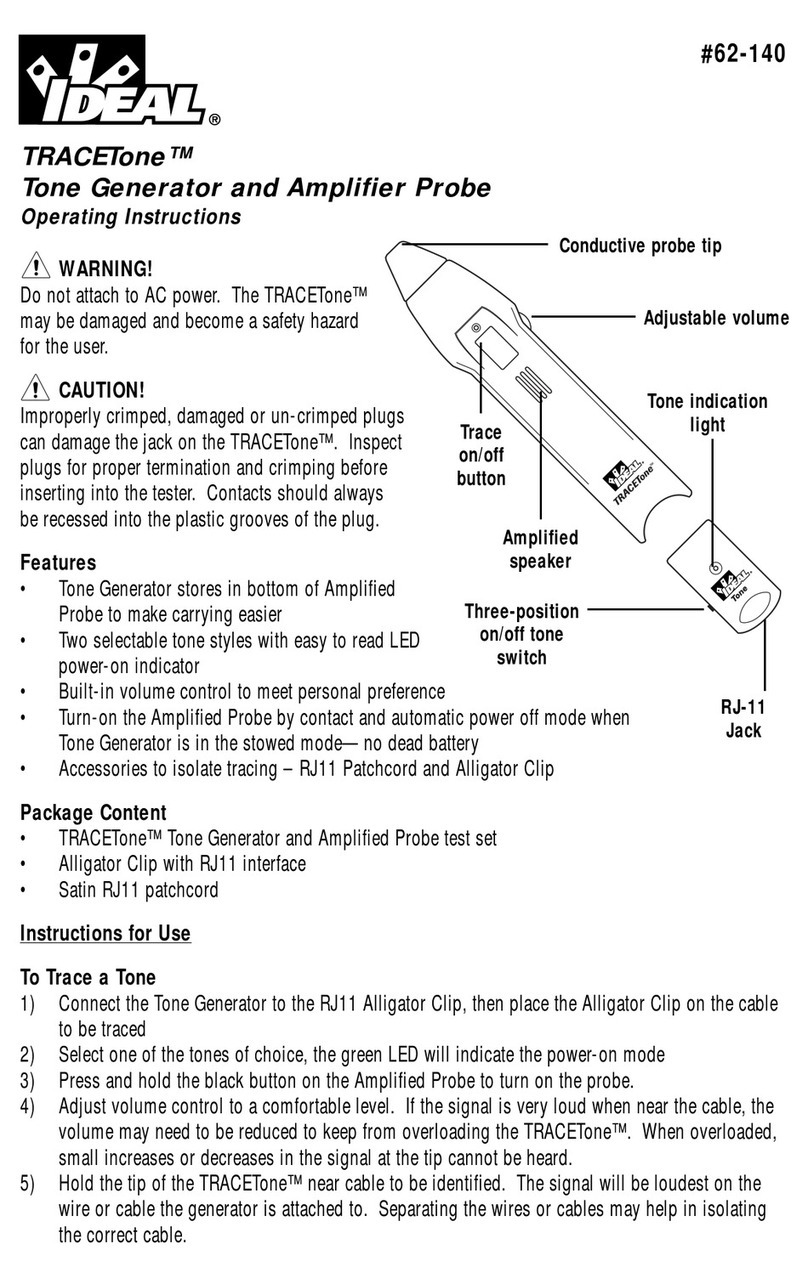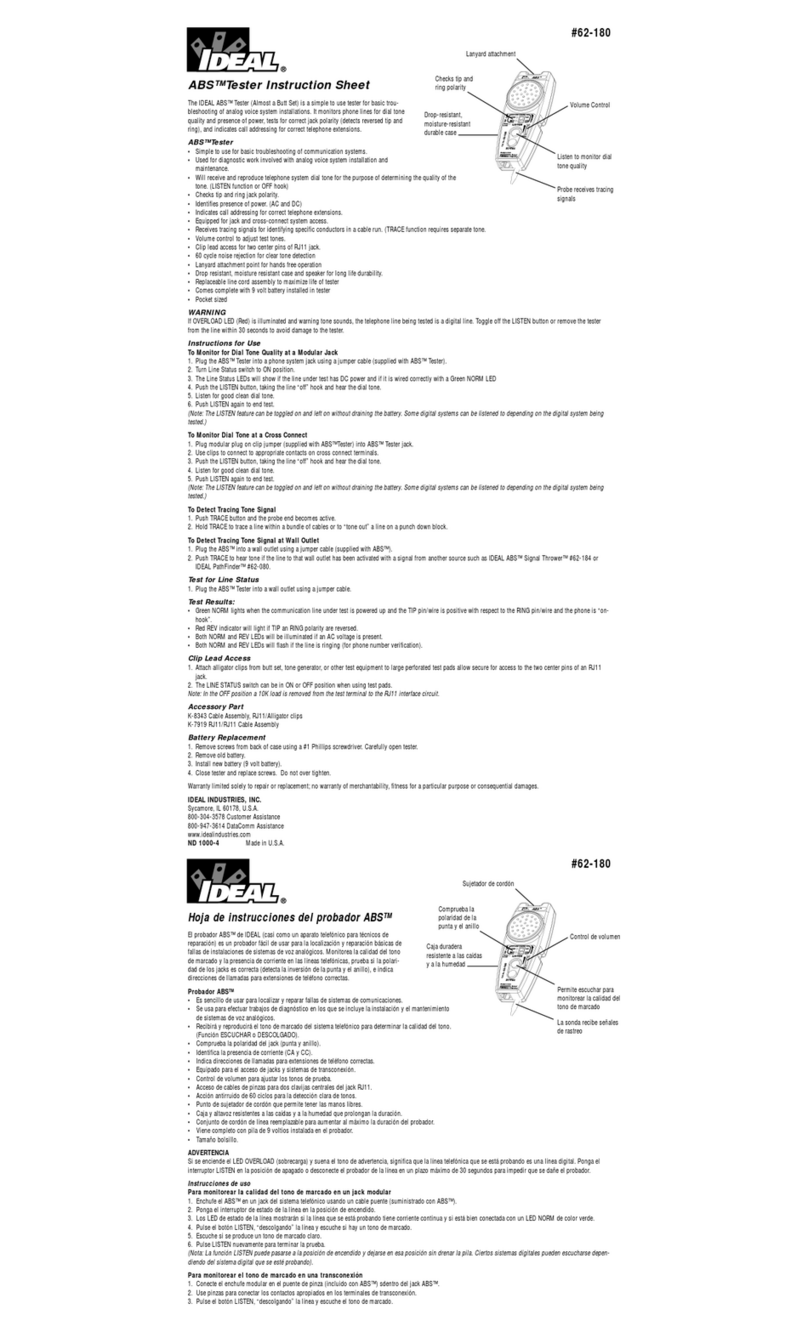
Contents
iv IDEAL
6 Testing Fibers ..............................................................................................37
Testing in Auto Mode ...........................................................................................................38
Testing in Fault Finder Mode .................................................................................................41
Testing in Manual (Advanced) Mode .....................................................................................43
Monitoring Fiber in Real Time Mode .....................................................................................46
Launch Conditions for Multimode Measurements ................................................................49
7 Managing Test Results ................................................................................51
Summary Pane ......................................................................................................................51
Events Pane ..........................................................................................................................52
Trace Pane .............................................................................................................................53
Trace Info. Pane ....................................................................................................................54
Using Markers .......................................................................................................................56
Using Zoom Controls ............................................................................................................57
Printing Test Results ..............................................................................................................59
Opening Trace Files ...............................................................................................................60
Saving Files ...........................................................................................................................61
Checking Available Memory ..................................................................................................63
Creating Folders ....................................................................................................................63
Copying, Renaming, or Deleting Files and Folders ................................................................64
Transferring Results to a Computer .......................................................................................66
8 Using Your OTDR as a Light Source ............................................................71
Activating/Deactivating a Light Source .................................................................................72
Modulating the Source Signal ..............................................................................................73
9 Maintenance ................................................................................................75
Cleaning UI Connectors ........................................................................................................76
Recharging Main Batteries ....................................................................................................78
Replacing Batteries ...............................................................................................................79
Recalibrating the Unit ...........................................................................................................80
Upgrading the IDEAL OTDR Software ...................................................................................81
Recycling and Disposal (Applies to European Union Only) ....................................................83
10 Troubleshooting ..........................................................................................85
Solving Common Problems ...................................................................................................85
Obtaining Online Help ..........................................................................................................88
Customer Support and Technical Assistance .........................................................................89
Transportation ......................................................................................................................91


































